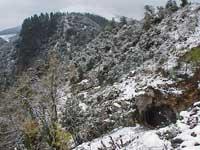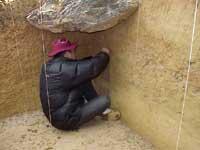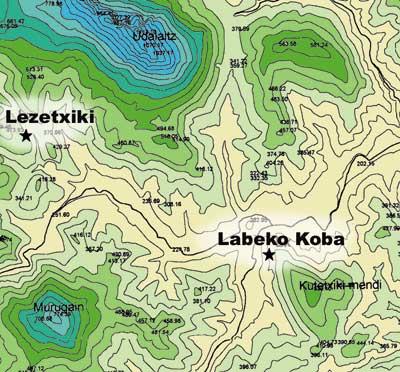Archaeological treasure of the Arrasate area
Arrasate is surrounded by mountains. For millions of years, this meeting point between the Deba and Aramaio rivers has been a limestone environment, full of caves. Therefore, in this area there have been many animals that have lived; when the climate of adversity demanded it, these caves had a great refuge, both for the animals and for the human being when they arrived.
"The man took advantage of the Aramaio river basin, probably a hunting place. He hunted many rhinos, mammoths, uros and bison, large animals and deer and horses. For anyone living in Arrasate it is mind-boggling: Rhinoceros remains are also appearing in Lezetxiki," says archaeologist Alvaro Arrizabalaga, smiling.

Arrizabalaga is a member of the Sociedad de Ciencias Aranzadi and professor of Prehistory at the UPV. He has been digging with Jesus Altuna for some time. He has often had to work in very strange circumstances, and it can be said that he has witnessed research on the first inhabitants of our valleys. But not only the witness, of course.
The man lived in the caves of Arrasate or, at least, entered them to obtain food: in order to steal the parts of the animals that hunted hyenas and bears, they often had to register in the caves.
The first 'mondragoneses'
What were its first inhabitants? It is difficult to answer because there are very few fossils that know it. We would have to speak at European level to describe an approximate situation and yet there are few fossils.
The fossils found in Atapuerca have a lot to do with this topic: From it there have emerged remains of some species that could be ancestors to the Man of Neanderthal, and many of them. The characteristics of some fossils of Atapuerca and Lezetxiki are not very different, so what has been learned in this prestigious Bordeaux site has been very useful for scientists. However, it cannot be said that before the Neanderthals there was a person who lived there; with the remains there is much salsa.
What was found in Lezetxiki? Father Barandiaran, among other things, found the humerus of a Neanderthal woman, the oldest human fossil found in the Basque Country. And it is not the only fossil buried in this cave. Animal bones and man-made utensils have also been found. The clay accumulates little by little in the soil, so that each epoch has a certain depth. Lezetxiki excavations are not finished: Aranzadi archaeologists are working hard because they lack about half of the pile of clays totaling nine meters high. Archaeologists have increasingly better techniques and are increasingly knowledgeable.

Lezetxiki excavation is not being easy. The High Speed Train had to pass very close to the cave porch, but fortunately they solved the problem: "When previous efforts are made, the mechanisms that we have interspersed often work," says Arrizabalaga. "With the allegations made in time we managed to move the train route. They have moved 200 meters and for us those 200 meters are very important".
Cross the river and there
The history of the archaeological treasure of the valley has surprising surprises. About four kilometers from Lezetxiki, in another cave, the same group had the opportunity to make excavations. This other site no longer exists, as a road was built and the cave was destroyed.
This cave was very close to the confluence of the Deba and Aramaio rivers. In 1971 three young men from Arrasate discovered the skull of a third. It was very well preserved, perhaps there could be more fossils. But the cave was on the route of the projected road. The Aranzadi group made great efforts to extract its fossil treasure. Once the project of the road was known, it was contacted with the City of Arrasate and the Provincial Council of Gipuzkoa; these conversations were fruitful: the project of the road was delayed and a deadline was granted to archaeologists for excavation.
The excavation of such a site is a work of years, but in this case there was not so many possibilities to do so in time, so another type of strategy was launched: the rapid evacuation of the material for conservation and study. According to Arrizabalaga, "the cave was destroyed, but not the deposit". The excavation began in September 1987 and ended in December 1988.
For thousands of years the cave lost the stone roof, so the fossils have deteriorated. However, from the time of the 'transition' of the man from Neanderthal to the Cro-magnon, remains of the Labeko Cave have emerged. Given the situation in which they are located, it is very difficult to indicate the date of origin of the tracks.
However, thanks to the work of archaeologists we know that in the Cave of Labeko there has been human activity, apparently, in the same place where they were carnivores. Perhaps there was some competition for the flesh of herbivores. Remains of the latter have also been found. How were the conflicts? We will never know, but as the archaeologists have written, the cave of Labeko Koba was a cave of hyenas and humans.

Published in the supplement Estación de Gara.
Buletina
Bidali zure helbide elektronikoa eta jaso asteroko buletina zure sarrera-ontzian











